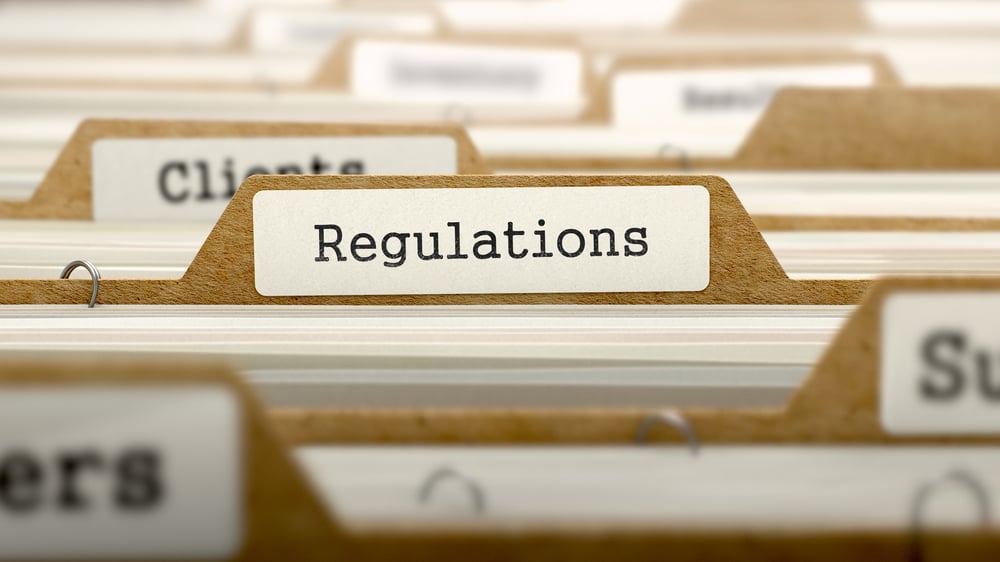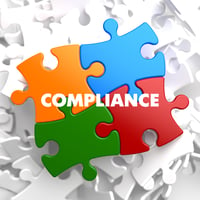What is a regulatory compliance software? Regulatory compliance software tools are used to automate...
Compliance Training for Employees
Compliance is defined as the process of adhering to guidelines or specifications. In the business world, compliance is often related to regulatory standards that businesses must meet in order to operate legally. Compliance training is therefore a type of training that teaches employees about the company's compliance standards and how to adhere to them.
What is compliance?
Compliance training for employees typically covers the following topics:
- The company's compliance policies and procedures
- Regulatory requirements that apply to the company's business activities
- How to identify and report potential compliance violations
- The consequences of violating company compliance policies
Compliance training is important because it helps employees understand the importance of complying with company policies and procedures. It also helps employees to identify potential compliance risks and to know how to report them.
The benefits of compliance training
Compliance training can benefit companies in several ways:
- It can help to prevent potential compliance violations from occurring.
- It can help companies to avoid penalties for non-compliance.
- It can help companies to build a positive reputation with regulators.
- It can help companies to foster a culture of compliance within the organization.
The challenges of compliance training
Compliance training can be challenging for companies for several reasons:
- It can be time-consuming and expensive to develop and deliver compliance training.
- It can be difficult to ensure that employees actually receive and complete the training.
- It can be difficult to measure the effectiveness of compliance training.
What is regulatory compliance training?
Regulatory compliance training is a type of compliance training that covers specific regulatory requirements that apply to a company's business activities. Regulatory compliance training is important because it helps employees to understand the regulations that apply to their job tasks and how to comply with them.
The benefits of regulatory compliance training
Regulatory compliance training can benefit companies in several ways:
- It can help companies to avoid penalties for non-compliance.
- It can help companies to build a positive reputation with regulators.
- It can help employees to better understand their job tasks and how to comply with regulatory requirements.
Choosing a compliance training solution for your employees:
Compliance training is an important part of ensuring that your employees are aware of the company's policies and procedures. By providing this type of training, you can help to reduce the risk of potential compliance issues arising within the workplace. There are a number of different ways in which you can deliver compliance training to your employees, such as through online courses, in-person seminars, or even through written materials.
When choosing a compliance training solution for your business, it is important to consider the needs of your employees. For example, if you have a workforce that is spread out across different locations, you will need to ensure that the solution you choose is able to reach all employees. Additionally, you will need to consider the different learning styles of your employees and tailor the solution accordingly.
Once you have chosen a compliance training solution, it is important to deliver the training in a way that is engaging and effective. This means using materials that are easy to understand and providing employees with opportunities to ask questions and receive feedback. Additionally, you should consider offering incentives for employees who complete the training, such as discounts on company products or services.
The compliance training solution that you choose for your business should be reviewed on a regular basis to ensure that it is still meeting the needs of your employees. Additionally, you should update the training materials on a regular basis to reflect any changes in the company's policies or procedures. By taking these steps, you can help to ensure that your employees are always up-to-date on the latest compliance information.
Compliance training programs:
When developing a compliance training program for your employees, there are a number of different elements that you will need to consider. These elements include:
- The objectives of the training program.
- The target audience for the training program.
- The content of the training program.
- The delivery method for the training program.
- The evaluation and assessment methods for the training program.
Once you have considered these elements, you will be able to develop a compliance training program that is tailored to the needs of your business. Additionally, you can use this program as a foundation for developing more specific compliance training programs in the future.
Compliance policies:
Compliance policies are an important part of any business. These policies help to ensure that employees are aware of the company's expectations and procedures for compliance with laws and regulations. Additionally, compliance policies can help to prevent potential compliance issues from arising within the workplace.
When developing compliance policies for your business, there are a number of different elements that you will need to consider. These elements include:
- The scope of the policy.
- The procedures for implementing the policy.
- The training and education requirements for employees.
- The enforcement mechanisms for the policy.
Once you have considered these elements, you will be able to develop compliance policies that are tailored to the needs of your business. Additionally, you can use these policies as a foundation for developing more specific compliance training programs in the future.
Creating a culture of compliance:
A culture of compliance is essential for any business. This culture helps to ensure that employees are aware of the company's expectations and procedures for compliance with laws and regulations. Additionally, a culture of compliance can help to prevent potential compliance issues from arising within the workplace.
When creating a culture of compliance, there are a number of different elements that you will need to consider. These elements include:
- The values and beliefs of the company.
- The policies and procedures for compliance.
- The training and education requirements for employees.
- The enforcement mechanisms for the compliance policy.
Once you have considered these elements, you will be able to develop a culture of compliance that is tailored to the needs of your business. Additionally, you can use this culture as a foundation for developing more specific compliance training programs in the future.
Compliance training programs are an important part of any business. By taking the time to develop a compliance training program, you can help to ensure that your employees are always up-to-date on the latest compliance information. Additionally, you can use this program as a foundation for developing more specific compliance training programs in the future.

CLICK HERE to request a free (no commitment) online demo of your desired compliance training topics
Glossary:
Compliance training program:
A compliance training program is a set of instructions or materials that are designed to help employees learn about the company's compliance policies and procedures. This type of program can be used to train new employees on the basics of compliance, or to refresh the knowledge of existing employees. Additionally, compliance training programs can be used as a foundation for developing more specific compliance training programs in the future.
Target audience:
The target audience for a compliance training program is the group of employees who are required to complete the program. This group can be determined by the nature of the business, the compliance risks associated with the business, or other factors.
Content:
The content of a compliance training program will vary depending on the needs of the business. However, some common topics that are covered in these programs include:
- An overview of the company's compliance policies and procedures.
- The procedures for reporting potential compliance issues.
- The consequences of non-compliance with the company's compliance policies.
- The training and education requirements for employees.
Delivery method:
The delivery method for a compliance training program will vary depending on the needs of the business. However, some common delivery methods include:
- Classroom instruction.
- Online courses.
- Webinars.
- Videos.
- Manuals or handbooks.
Occupational safety:
Occupational safety is the practice of protecting workers from hazards that are present in the workplace. This includes ensuring that employees have the proper training and equipment to safely perform their job tasks, as well as implementing policies and procedures to reduce the risk of accidents and injuries.
Workplace safety:
Workplace safety is the practice of protecting workers from hazards that are present in the workplace. This includes ensuring that employees have the proper training and equipment to safely perform their job tasks, as well as implementing policies and procedures to reduce the risk of accidents and injuries.
Health insurance portability:
Health insurance portability is the ability of individuals to maintain their health insurance coverage when they change jobs. This includes having the option to continue their existing coverage, as well as enroll in a new plan if they so choose.
Sexual harassment training:
Sexual harassment training is a type of compliance training that is designed to help employees learn about the company's policies and procedures regarding sexual harassment. This type of training can be used to train new employees on the basics of compliance, or to refresh the knowledge of existing employees. Additionally, sexual harassment training can be used as a foundation for developing more specific compliance training programs in the future.
Cybersecurity:
Cybersecurity is the practice of protecting computer networks and systems from unauthorized access or theft. This includes implementing security measures such as firewalls and encrypting data, as well as training employees on how to identify and avoid potential security risks.
Diversity training:
Diversity training is a type of compliance training that is designed to help employees learn about the company's policies and procedures regarding diversity. This type of training can be used to train new employees on the basics of compliance, or to refresh the knowledge of existing employees. Additionally, diversity training can be used as a foundation for developing more specific compliance training programs in the future.
State and federal laws:
State and federal laws are the rules and regulations that businesses must follow in order to operate legally. These laws can cover a wide range of topics, such as employment, environmental protection, and consumer protection. Compliance with these laws is required in order to avoid penalties, such as fines or jail time.
Industry-specific regulations:
Industry-specific regulations are the rules and regulations that businesses must follow in order to operate legally in their specific industry. These regulations can cover a wide range of topics, such as employment, environmental protection, and consumer protection. Compliance with these regulations is required in order to avoid penalties, such as fines or jail time.
Accountability act:
The accountability act is a type of compliance training that is designed to help employees learn about the company's policies and procedures regarding accountability. This type of training can be used to train new employees on the basics of compliance, or to refresh the knowledge of existing employees. Additionally, accountability act training can be used as a foundation for developing more specific compliance training programs in the future.
The Sarbanes-Oxley Act:
The Sarbanes-Oxley Act is a type of compliance training that is designed to help employees learn about the company's policies and procedures regarding the Sarbanes-Oxley Act. This type of training can be used to train new employees on the basics of compliance, or to refresh the knowledge of existing employees. Additionally, Sarbanes-Oxley Act training can be used as a foundation for developing more specific compliance training programs in the future.
OSHA:
OSHA is a type of compliance training that is designed to help employees learn about the company's policies and procedures regarding OSHA. This type of training can be used to train new employees on the basics of compliance, or to refresh the knowledge of existing employees. Additionally, OSHA training can be used as a foundation for developing more specific compliance training programs in the future.
Drug and alcohol abuse:
Drug and alcohol abuse is prohibited in the workplace. This includes the use of illegal drugs, as well as the abuse of prescription drugs. Additionally, employees who are under the influence of drugs or alcohol while working may be subject to disciplinary action, up to and including termination.
Workplace violence:
Workplace violence is prohibited in the workplace. This includes any type of physical violence, as well as threats of violence. Additionally, employees who engage in workplace violence may be subject to disciplinary action, up to and including termination.
Compliance courses:
Compliance courses are designed to help employees learn about the company's policies and procedures regarding compliance. These courses can be used to train new employees on the basics of compliance, or to refresh the knowledge of existing employees. Additionally, compliance courses can be used as a foundation for developing more specific compliance training programs in the future.
Compliance regulations:
Compliance regulations are the rules and regulations that businesses must follow in order to operate legally. These regulations can cover a wide range of topics, such as employment, environmental protection, and consumer protection. Compliance with these regulations is required in order to avoid penalties, such as fines or jail time.
Industry-specific compliance:
Industry-specific compliance is the compliance that businesses must follow in order to operate legally in their specific industry. These compliance requirements can cover a wide range of topics, such as employment, environmental protection, and consumer protection. Compliance with these regulations is required in order to avoid penalties, such as fines or jail time.
Business Ethics:
Business ethics is the study of the ethical principles that guide businesses and business decision-making. These principles can cover a wide range of topics, such as employment, environmental protection, and consumer protection. Businesses must operate in a way that is consistent with these ethical principles in order to avoid penalties, such as fines or jail time.
Physical safety:
Physical safety is the compliance that businesses must follow in order to ensure the safety of their employees. This includes the use of personal protective equipment, as well as the implementation of safe work practices. Compliance with these regulations is required in order to avoid penalties, such as fines or jail time.
Information security:
Information security is the compliance that businesses must follow in order to protect their information from unauthorized access. This includes the use of security measures, such as encryption and firewalls. Compliance with these regulations is required in order to avoid penalties, such as fines or jail time.
Data privacy:
Data privacy is the compliance that businesses must follow in order to protect the privacy of their data. This includes the use of security measures, such as encryption and firewalls. Compliance with these regulations is required in order to avoid penalties, such as fines or jail time.
Product safety:
Product safety is the compliance that businesses must follow in order to ensure the safety of their products. This includes the use of safety measures, such as testing and labeling. Compliance with these regulations is required in order to avoid penalties, such as fines or jail time.
Real world scenarios:
Now that you understand the basics of compliance, let's take a look at some real-world scenarios where compliance is important.
Scenario 1:
You are the owner of a small business that manufactures and sells products. One of your employees comes to you and says that she is pregnant and needs to take maternity leave. You know that you are required by law to provide her with maternity leave, but you are not sure how long she is entitled to take off.
What do you do?
In this scenario, you would need to consult with a lawyer or compliance officer to determine the length of maternity leave that your employee is entitled to. Once you have this information, you would need to provide her with the appropriate amount of leave.
Scenario 2:
You are the owner of a small business that manufactures and sells products. You have just learned that one of your employees has been using company funds for personal expenses.
What do you do?
In this scenario, you would need to consult with a lawyer or compliance officer to determine the appropriate course of action. Depending on the severity of the situation, you may need to take disciplinary action against the employee, such as termination.
Scenario 3:
You are the owner of a small business that manufactures and sells products. One of your employees comes to you and says that she is pregnant and needs to take maternity leave. You know that you are required by law to provide her with maternity leave, but you are not sure how long she is entitled to take off.
What do you do?
In this scenario, you would need to consult with a lawyer or compliance officer to determine the length of maternity leave that your employee is entitled to. Once you have this information, you would need to provide her with the appropriate amount of leave.
Scenario 4:
You are the owner of a small business that manufactures and sells products. You have just learned that one of your suppliers has been using child labor in their factory.
What do you do?
In this scenario, you would need to consult with a lawyer or compliance officer to determine the appropriate course of action. Depending on the severity of the situation, you may need to take disciplinary action against the supplier, such as terminating the contract.
CLICK HERE to request a free (no commitment) online demo of your desired compliance training topics




